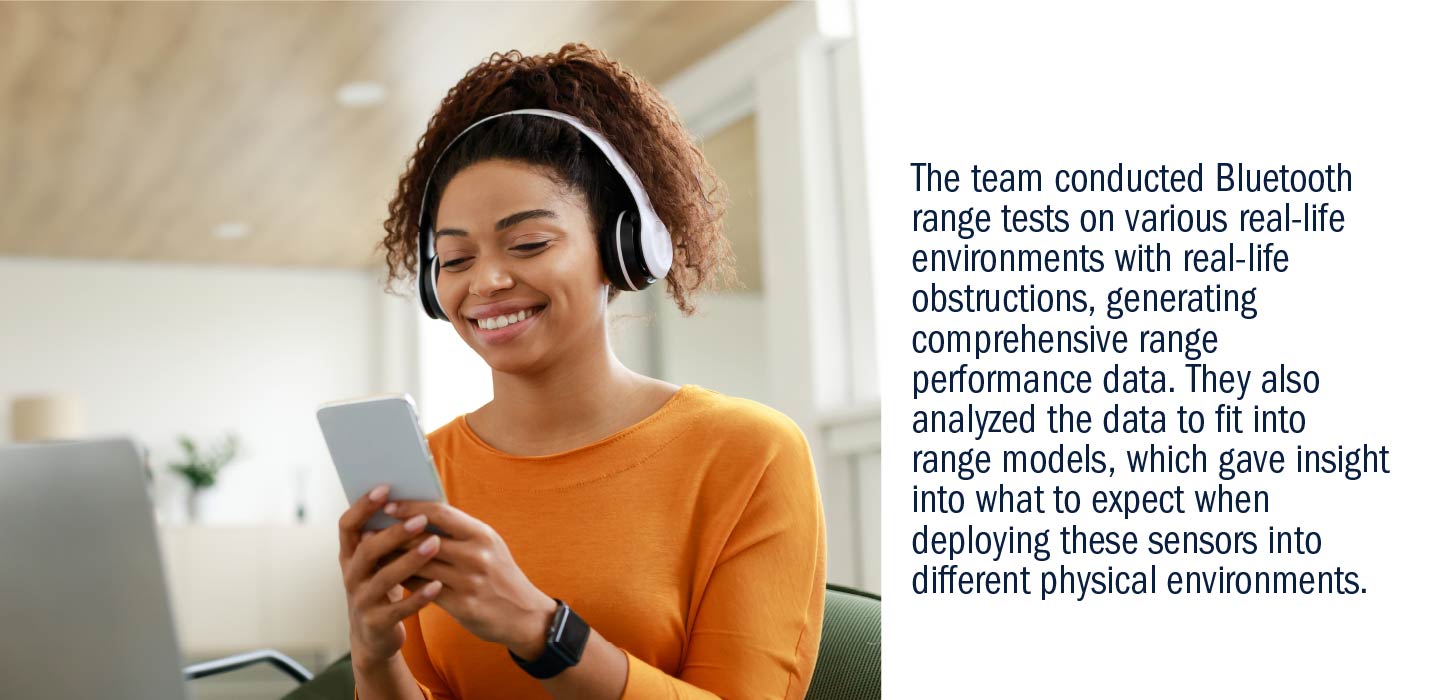Every research project has something important to share with the world, but no two projects are the exact same. As the journey unfolds, researchers often develop insights and knowledge that broaden the breadth and depth of their original exploration. In a recent applied research project, Humber College research team led by professor Timothy Wong, PhD, Faculty of Applied Sciences & Technology (FAST), successfully proposed and implemented a measurement solution that they developed during their collaboration with an industry partner.
Challenge addressed
The industry partner is a technology innovator and a solution provider in the Internet of Things (IoT) space. The research team has found that since the IoT sensors are ubiquitous, they have to meet or exceed their required Bluetooth performance. If they do not, it becomes challenging to troubleshoot problems a human eye cannot see. To prevent such challenges from occurring, Humber research team proposed looking into the performance of the industry partner’s current set of Bluetooth-enabled IoT modules.
When their proposal was accepted, Humber research team tested the Bluetooth sensors provided by the industry partner. The team conducted Bluetooth range tests on various real-life environments with real-life obstructions, generating comprehensive range performance data. They also analyzed the data to fit into range models, which gave insight into what to expect when deploying these sensors into different physical environments.

Impact of the project
Measuring the performance of a sample of mass-manufactured Bluetooth IoT modules against the required performance benchmark serves an important purpose. The project team observes that before beginning the measurement, it’s important to know what the required performance benchmark is. The team notes that the solution provider should have multiple reference (not-for-sale) samples in-house that were well built and gone through vigorous testing. These samples would go through a number of required tests, and their performance would be recorded as benchmarks.
Subsequently, when a new manufacturing contract comes up for renewal or bidding, the solution provider can supply reference sample data and benchmark for the bidders to assess their products against. Better still, upon receiving the finished products, the solution provider can select a sample of these finished products, run reference tests on them and compare the output to the reference data. The solution provider can also come up with an acceptable percentage to help them decide on whether the finished products are within the allowable range of performance.
Learn more about ways to get involved in research projects taking place at Humber.
